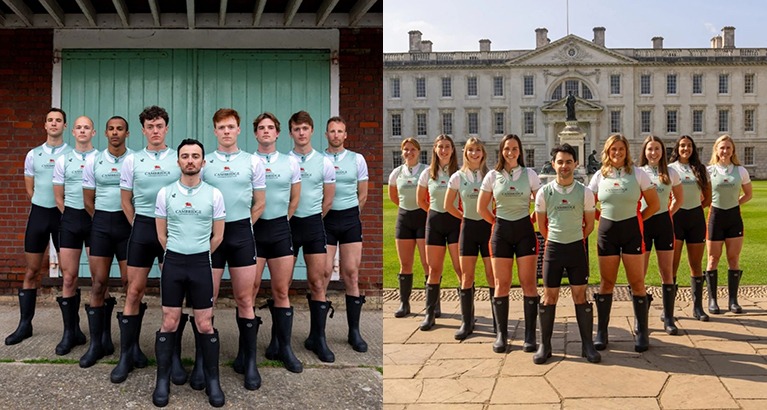1
Starting early: planning your preparation
The GMAT was designed especially for business schools to assess an applicant’s analytical and quantitative abilities to take on the challenging academic curriculum of MBA programmes. Most Cambridge MBA candidates sit the GMAT- although the GRE is equally acceptable. The strategy needed for success is similar in both.
“I don’t think you can start too early. The more time you can give yourself to prepare, the better. Just how much individual preparation is needed will depend on the different circumstances of each candidate. Around 3 months might be enough if you have never seen a practice GMAT or GRE test before. Some students, however, can spend a year on the GMAT to get the score they want,” says Charlotte Russell-Green, Head of MBA Recruitment & Admissions.
“We require either a GMAT Focus or GRE test score as part of the application. We accept both and we do not have a preference. We still accept the old GMAT test score for those that have already taken it – so we will accept a test score from the old GMAT test until it expires, “(valid for 5 years)” continues Charlotte Russell-Green.
At Cambridge Judge our average scores are – GMAT Focus – 625-635, GRE – verbal is 78%, quant is 71%, GMAT – 680-690. But remember there is no minimum requirement for applying.
I don’t think you can start too early. The more time you can give yourself to prepare, the better. Just how much individual preparation is needed will depend on the different circumstances of each candidate. Around 3 months might be enough if you have never seen a practice GMAT or GRE test before. Some students, however, can spend a year on the GMAT to get the score they want.
2
Get practicing: framing your future
We recommend you create a study plan where you start practicing past papers and get to know the format and understand the fundamentals. There are many resources and support out there, both free and with a fee. Choose your preferred support platforms and start practicing for the test and building up your stamina for the 3 hours plus online process.
Use the Official Guide for GMAT Review and official practice tests, which include prep materials, online resources, prep books and courses. These resources provide realistic practice questions and tests that mirror the actual exam.
Understand the format of the exam, so the GMAT consists of 4 sections:
- analytical writing assessment (AWA)
- integrated reasoning (IR)
- quantitative
- verbal
The test itself lasts 3.5 hours, including breaks, so familiarise yourself with the timing of each section to manage your pace.
3
The 4 fundamental elements of the test
The GMAT is divided into 4 sections, each designed to test you and support your learning and skills as you prepare for the rigours of an MBA programme. You can prepare and test yourself for each of these sections.
- For the quantitative section: review your basic maths concept, including algebra, geometry and arithmetic. Focus on practicing problem-solving and data sufficiency questions.
- For the verbal: improve your grammar, reading comprehension, and critical reasoning skills. Practice sentence correction, reading passages, and evaluating arguments.
- And finally, for the AWA and IR sections: practice writing essays under timed conditions and solving Integrated Reasoning questions to become familiar with the question types.
4
Develop test taking strategies
Building your skills to take the test in a live setting (online or in person) and building your stamina for the test itself, is also a strategy to practice.
From time management to stress management, these strategies will help you manage the challenge of the test itself but also the hurdles ahead as you journey through your MBA studies. Ensure you can complete each section within the allotted time. Pace yourself and time yourself as you practice test conditions.
It is better to tackle and answer every question than to fall into the trap of worrying if you have answered every question correctly and lose time along the way!
There is a penalty for not completing each section of the test, so any unanswered questions or anything you leave blank will affect your score overall and bring it down.
Do your best but stick to your pacing strategy to complete every question where you can.
Guessing is a strategy that can allow you to get through all the questions in the given time. Learn to make educated guesses where necessary and don’t leave a question blank.
Finally develop techniques to stay calm and focused during the test, from deep breathing techniques to brief relaxation techniques. The test is over 3 hours, and it is better for your body to calmly work through from one element to another, without losing focus along the way.
By following these tips and maintaining a disciplined study routine, you’ll be well-prepared to tackle the GMAT and achieve a score that will strengthen your MBA application.
5
Sharing your scores: making it official
It can take months to prepare and take the GMAT and GRE, and you might need to take it more than once to get the score that you desire. Most people spend their weekends and spare time practicing questions.
You will need to have passed the GMAT or GRE by the time you apply. You can self-report your score on the application form, but you will also need to authorise the centre to make your scores officially available to us. For the GMAT, many test centres will do this for free – for up to 5 schools. Check what the process is with your test centre. We won’t be able to review your application until we can access your official score report, so leave enough time to make sure it’s available for us to check.
6
The whole picture: beyond the GMAT score
“This test is an opportunity for you to showcase your capability for the MBA. Especially if you do not have a high undergraduate degree score – you can compensate with a strong GMAT Focus or GRE score,” explains Charlotte Russell-Green.
“However, it is not the be all and end all. We take a holistic approach to reviewing an application, looking at the whole picture, including work experience, career progression, international exposure, answers to essays, academic performance at undergrad, letter of recommendation and, of course, the GMAT or GRE test score result,” she continues.
“Another great way of making an impact is to connect with us through our events. There are lots of virtual and in-person events so please do show up and introduce yourself. This takes you off the page and gives you an identity with the recruitment and admissions team, adding to that “whole picture” that we look at when reviewing an application,” Charlotte concludes.
As we prepare to open the Admissions cycle for entry in September 2025, we wish you luck with all aspects of your application and our MBA Admissions team are here to support and advise you every step of the way.
Related articles
Student and alumni news
2025 Boat Race features 3 Cambridge MBA rowers
Olympians and other championship rowers from Cambridge Judge Business School compete for the women’s and men’s University of Cambridge squads on the River Thames.
Programme news
Celebrating Ramadan: fostering inclusion
Cambridge Judge Business School hosts Iftar dinner breaking the Ramadan fast, fostering inclusivity and understanding throughout the diverse Cambridge community.
Student and alumni news
Sustainable fashion venture named to disruptive startup list
ANNDERSTAND, an affordable fashion brand founded by Cambridge MBA graduate Ge Yu (MBA 2023), has been named as one of the Most Disruptive MBA Startups by business education publication Poets & Quants.






